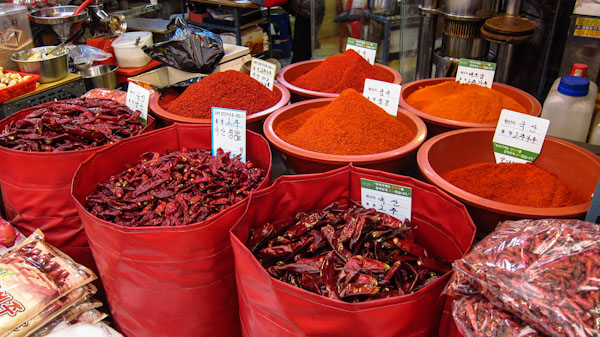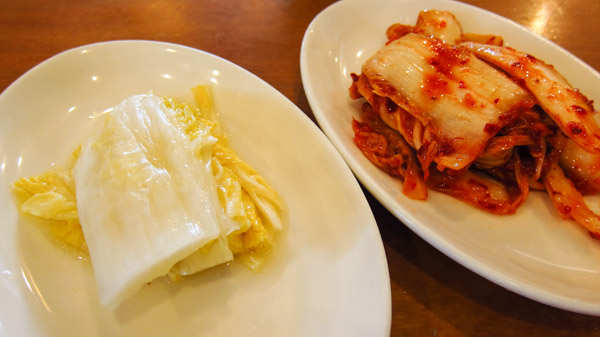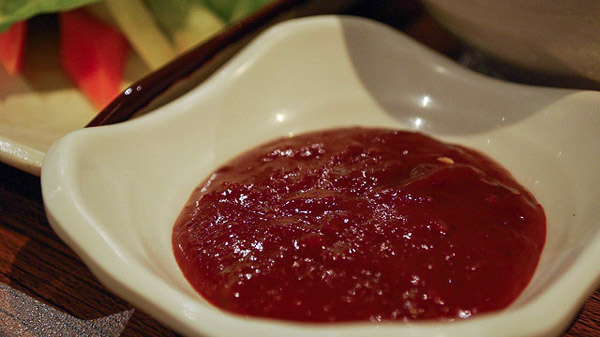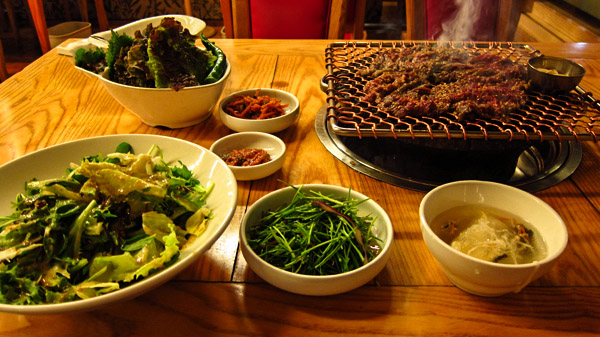
Koreans are proud of their food and for good reasons. It describes who they are, where they have been, and where they are going. Korea may not have a cuisine as well known as Japan or China, but Seoul is still a major foodie destination and one of the many reasons why so many people choose to visit.
The cuisine of the Korean peninsula is based heavily on meats, rice, and fresh and pickled vegetables. Most meals are accompanied with an assortment of small side dishes known as banchan.
Barbecue
Barbecue restaurants are everywhere in Seoul. They can be found on literally every street across the city. Most restaurants offer a wide variety of meats including samgyeopsal (pork belly), galbi (marinated short ribs), bulgogi (marinated beef), dak (chicken), seafood (haemul), and a variety of vegetables. If you are dining alone, be prepared to order two servings of meat.
A typical barbecue restaurant features a grill in the middle of your table over an open flame. The raw meat is then placed on the grill to cook. At most restaurants, you will cook and flip the meat over on the grill on your own. When done, use scissors to cut the meat into smaller pieces
Accompanying the meat will be a variety of banchan (side dishes) including perilla (sesame) leaves, lettuce, and condiments such as ssamjang (spicy red pepper paste) and doenjang (soybean paste). Simply place a perilla leaf or piece of lettuce in one hand, load it up with bite sized pieces of barbecued meat, add your condiments, roll it up, and enjoy. This process is known as ssam.
Fish and Seafood
If you are not eating beef or pork, then odds are you might be eating fish (saengseon) or seafood (haemul). There are countless amounts of seafood dishes including those which are grilled, broiled, in a stew or soup, or eaten raw (hoe).
One of the best places in Seoul for fish, seafood, or pretty much anything from the ocean that swims, or crawls, can be found at the Noryangjin Fish Market. The best way to experience the market is to pick out seafood and take it to a nearby restaurant where they will prepare a dish for you. It doesn’t come much fresher than that.
For the adventurous, try sannakji, which is chopped up raw baby octopus usually marinated in sesame oil. When served, the pieces of octopus will still be moving on your plate. Use caution when consuming sannakji as the suction cups could stick to your throat when swallowing which can cause a choking hazard.
Popular Korean Dishes
Condiments
The Korean cuisine is a complex mixture with a wide range of tastes, flavors, and styles that has evolved throughout their history from prehistoric times. With that said, Korean food and dishes have a few basic and staples ingredients, spices, and sauces that are found in almost any restaurant in Seoul serving Korean food.
Red Hot Peppers
Red hot peppers are a key ingredient for many dishes, stews, and condiments including kimchi and gochujang (see below). These peppers, which give the dishes their distinctive taste and spice are a very common part of the Korean diet. Use of the peppers is also popular since it is believed they help reduce and relive pain and also break down fat in the body which helps people lose weight.
When used, the red hot peppers are most often made into a red pepper paste and then used for many dishes and condiments.
Soybeans

Soybeans are the main ingredient in doenjang, a type of soybean paste (see below)
Kimchi
Kimchi is a spicy pickled cabbage dish that is found on the tables of almost every restaurants in Korea. It is to Korea what french fries are to America and pasta is to Italy.
There are many different varieties of Kimchi but the most basic ingredients are fermented salted cabbage seasoned with red pepper powder from hot red peppers, ginger, garlic, radishes, and scallions.
Condiments
Gochujang
Gochujang is a spicy red pepper paste made from dried hot red peppers, fermented soybeans, glutinous rice, water, and salt. All the ingredients are then fermented over time which enhances the flavor and spiciness of gochujang. Gochujang is often eaten with rice and found along with banchan and fresh vegetables such as lettuce and sesame leaves at many BBQ restaurants across Korea.
Doenjang
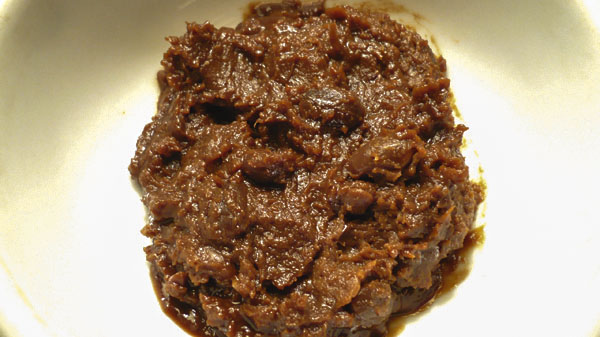
Learn more about Korean food dishes
Learn more about restaurants in Seoul
Last Updated on Dec 28, 2021
